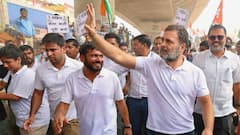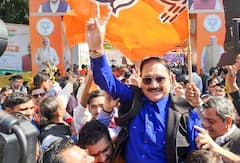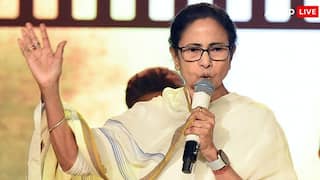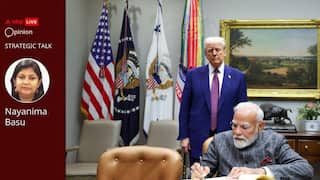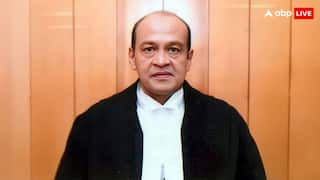Explorer
Results of Lok Sabha polls on Thursday: 10 interesting facts about India's general elections
The counting of votes for the seven-phase elections to the 17th Lok Sabha, the world's biggest democratic exercise, will take place on Thursday, bringing the curtains down on a bitterly-fought contest which the country rarely witnessed.

Artist Basavaraj poses with is bottle art creation of placing framed portraits of Prime Minister Narendra Modi (L) and Congress President Rahul Gandhi in narrow necked glass jars. Photo: AFP
NEW DELHI: The counting of votes for the seven-phase elections to the 17th Lok Sabha, the world's biggest democratic exercise, will take place on Thursday, bringing the curtains down on a bitterly-fought contest which the country rarely witnessed. Out of the 543 Lok Sabha seats, elections were held in 542 constituencies as the EC had cancelled polls to the Vellore constituency on the ground of excessive use of money power. Most of the exit polls have predicted that the Bhartiya Janata Party (BJP)-led National Democratic Alliance (NDA) is on course to retain power for a second term, riding on Prime Minister Narendra Modi's charisma like the way he swept to power in 2014. However, the opposition parties have trashed results of the exit polls, claiming that the BJP will suffer severe drubbing due to rising unemployment, farm distress and slowdown in the economy. The voting was staggered between April 11 and May 19 in which around 67 per cent of the nearly 900 million eligible people exercised their franchise to elect 542 members of the Lok Sabha from a total of 8,049 contestants. In the 2014 elections, the BJP won 282 seats while the Congress had suffered a severe drubbing getting an all-time low of 44 seats as against 206 it won in 2009. From 'chowkidar chor hai' and 'bhrashtachari no. 1' to 'khaki underwear', acerbic remarks ruled the roost this election season, making it one of the most bitterly-contested parliamentary polls post Independence. Election Commission officials said the counting of votes for the Lok Sabha elections will begin at 8.00 am Thursday and results are expected only by late evening. For the first time in Lok Sabha polls, the EC will tally vote count on Electronic Voting Machines with voter verified paper audit trail slips in five polling stations in each assembly segment of a parliamentary constituency. It will effectively mean that out of nearly 10.3 lakh polling stations, the EVM-VVPAT matching will take place in 20,600 such stations. In case of a mismatch, the results based on paper slip count will be considered as final. 10 interesting facts about India's general elections * The first Lok Sabha elections in 1952 cost around Rs 10.45 crore, while the 2014 general elections cost almost Rs 3,870.3 crore. * The first Lok Sabha elections were contested for 489 seats. The number of constituencies was increased to 543 in 1977. * A total of 53 parties and 533 Independents contested for the 489 seats in the 1952 elections. In 2014, 464 political parties and 3,234 candidates contested for the 543 seats. * An estimated 67.11 per cent of the nearly 91 crore electors turned up to cast their vote in 2019 Lok Sabha elections, the highest ever turnout recorded in any parliamentary polls in India. The overall turnout in 2014 was 66.40 per cent. The total number of voters for the 2019 Lok Sabha elections has gone up by 84.3 million since the 2014 polls. * The new voters took the total number of voters to 900 million of which around 15 million were in the age group of 18-19 years. A total of 10 lakh polling stations were set up this time as compared to around nine lakh in 2014. * In a first, candidates with criminal antecedents had to publish information in this regard in newspapers and through TV channels on three occasions during the campaign period. * The Electronic Voting Machines (EVM) and postal ballot papers for the first time carried the photograph of all the candidates to help voters identify the political leaders in the fray. * The cost of the Lok Sabha elections is borne by the Government of India. Only the honorariums of the poll observers are paid by the Election Commission. * When general elections are held simultaneously with Assembly polls, the cost is shared by the Centre and the respective state governments on a 50:50 basis. * In the 2014 Lok Sabha polls, Voter-verified Paper Audit Trails (VVPATs) were used in eight constituencies. This time, VVPATs were used in all the constituencies. * In Lok Sabha elections, the None of the Above or NOTA option was first used in 2014. (With inputs from agencies)
Related Video
Navi Mumbai Civic Polls: Shiv Sena and BJP to Contest Separately, No Alliance Announced
Follow Election 2025 News on ABP Live for more latest stories and trending topics. Watch breaking news and top headlines online on ABP News LIVE TV













